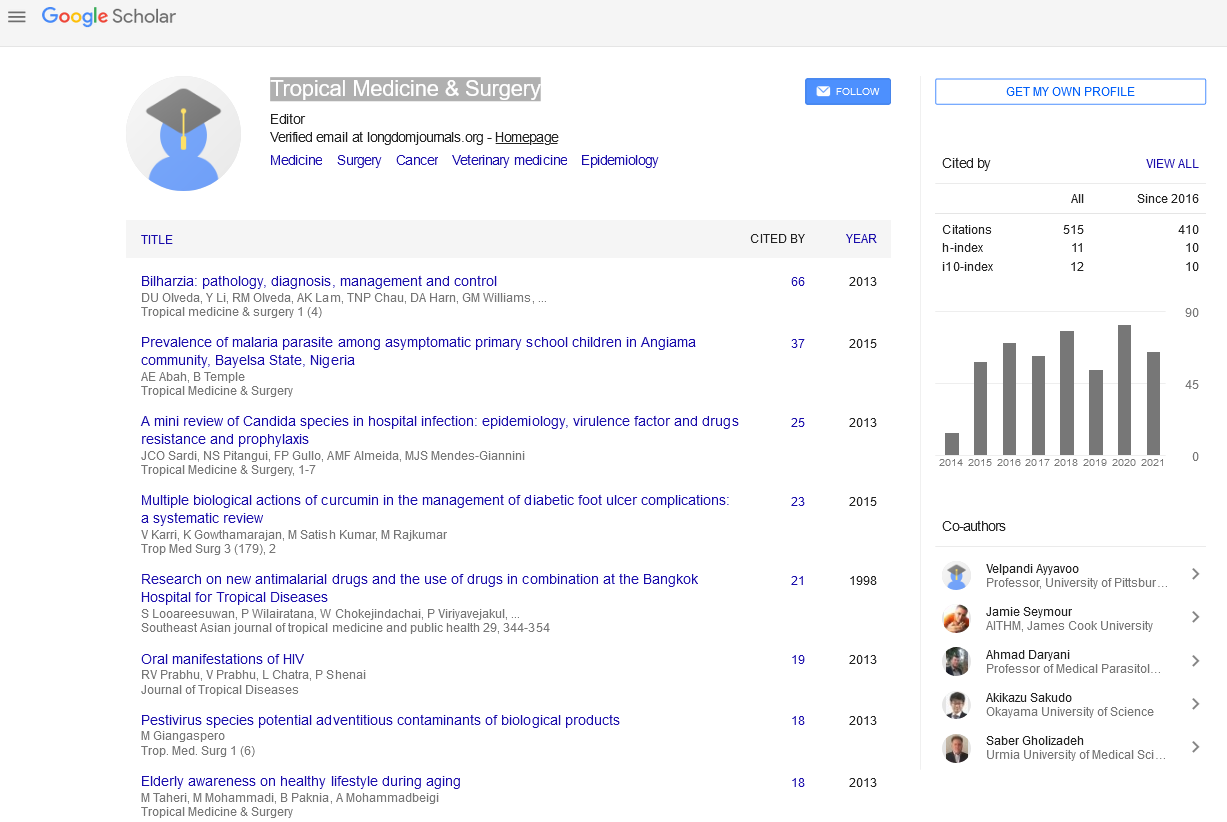PMC/PubMed Indexed Articles
Indexed In
- Open J Gate
- Academic Keys
- RefSeek
- Hamdard University
- EBSCO A-Z
- OCLC- WorldCat
- Publons
- Euro Pub
- Google Scholar
Useful Links
Share This Page
Journal Flyer

Open Access Journals
- Agri and Aquaculture
- Biochemistry
- Bioinformatics & Systems Biology
- Business & Management
- Chemistry
- Clinical Sciences
- Engineering
- Food & Nutrition
- General Science
- Genetics & Molecular Biology
- Immunology & Microbiology
- Medical Sciences
- Neuroscience & Psychology
- Nursing & Health Care
- Pharmaceutical Sciences
Abstract
A Mini Review of Candida Species in Hospital Infection: Epidemiology,Virulence Factor and Drugs Resistance and Prophylaxis
Janaina de Cassia Orlandi Sardi, Nayla de Souza Pitangui, Fernanda Patrícia Gullo and Ana Marisa Fusco Almeida e Maria José Soares Mendes Giannini
The introduction of more efficient diagnostic methods, new techniques in surgery and transplantation, antibiotics and chemotherapeutics more potent and novel materials for prostheses, catheters and probes significantly increased the life expectancy and quality of life of critically ill patients, on the other hand, hospital-acquired infections emerged as important iatrogenic complications. Invasive infections are a growing problem in public health hospitals in Brazil and worldwide. Among the various etiological agents found in the hospital environment, the genus Candida has been the third most frequently isolated pathogen. In general, invasive fungal infections are associated with high morbidity and mortality, difficulties in diagnosis, antimicrobial resistance, length of hospital stay and increased hospital costs. This mini review of the literature describes about epidemiology of hospital infection of Candida species, as well as its virulence factors and drugs resistance.

